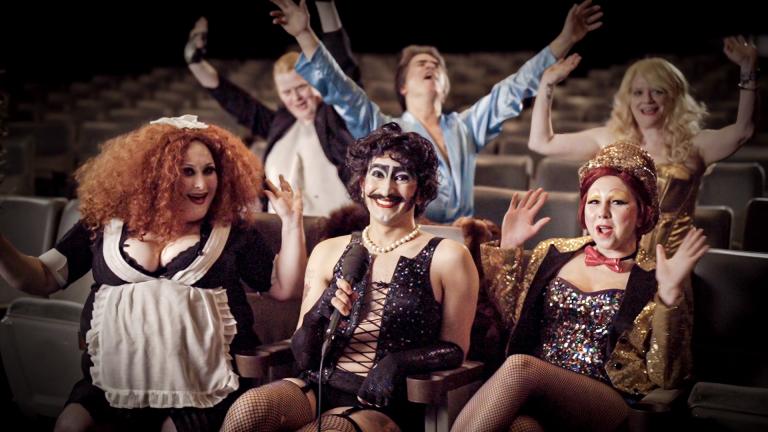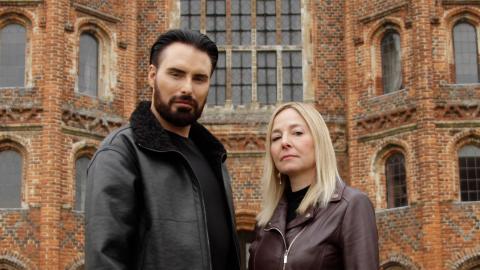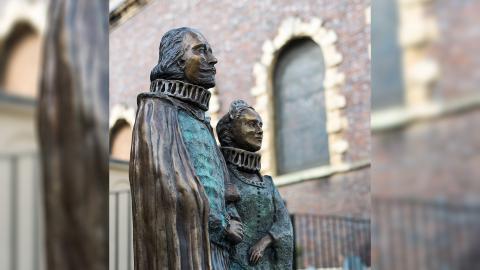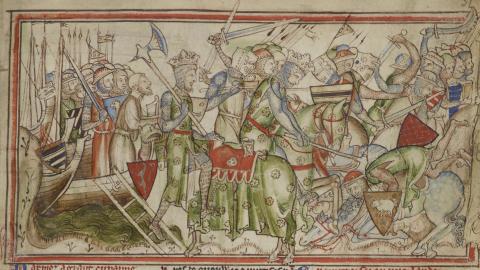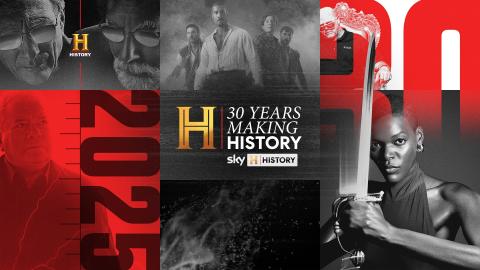Rocky Horror Turns 50! Interview with the director of the unofficial documentary
Celebrate 50 years of The Rocky Horror Picture Show with a new documentary exploring its history, cult fandom and lasting cultural impact.
Fearless, iconic and now officially old enough to be called a cult classic. The Rocky Horror Picture Show turns 50 in 2025, having entranced generation after generation – not least LGBTQ+ audiences across the globe.
To mark the occasion, a new documentary explores the history of the film and musical, from the early days at the Royal Court theatre to the big-screen adaptation and the cult phenomenon that followed.
At Sky HISTORY, we had the pleasure of talking to Andreas Zerr – director of Sane Inside Insanity: The Phenomenon of Rocky Horror. Read on as we explore this iconic film, the mischievous fans who kept it alive and brought it to the mainstream – and why it’s more important than ever!
How a gender-fluid, sci-fi, rock musical came to be
In the late 1960s, Richard O’Brien toyed with the idea of a show using the science fiction genre. By the early 1970s, he’d written The Rocky Horror Show as a first-of-its-kind, full-fledged rock and roll musical. Hair had become a Broadway and West End success just a few years prior, but was seen to have rock influences rather than being wholly rock-based like O’Brien’s creation.
It wasn’t just the rock emphasis or tongue-in-cheek tribute to science fiction that set Rocky Horror apart though. It exploded the idea of a mainstream musical with sexual liberation, gender fluidity and unapologetic queerness. Premiering at London’s Royal Court Theatre Upstairs in 1973, The Rocky Horror Show pushed boundaries in a way that few shows had dared before.
However, as Zerr points out – it didn’t revolutionise the genre on its own:
'Back in the day, a lot of cultural phenomena were considered rebellious and became mainstream over the years. The Rolling Stones were rebellious, so were David Bowie, Marc Bolan and even The Beatles. Plays like Hair, Oh, Calcutta! and Jesus Christ Superstar were rebellious. I think Rocky Horror just joined the ranks of rebellious productions; it did not invent or revolutionise musical theatre like other aforementioned plays did.
'What set it apart was, I think, the playful and entertaining way it dealt with more serious issues like fluid sexuality.'
Initial underground success
As a musical, The Rocky Horror Show was an underground success in the capital. But with the theatre seating around 60 people, it wasn’t long before celebrities were pushing their way to the front for tickets. After the Royal Court Upstairs came the converted cinema of the Chelsea Classic and then eventually the King’s Road Theatre, where it played on for several years.
By 1974, the show had crossed the pond to The Roxy in West Hollywood. The relatively small 200-seater venue had a party-like atmosphere, attracting everyone from movie stars like Jack Nicholson to rock stars like John Lennon.
This reflected an interconnection within the pop culture of the early 70s – something that stood out to Zerr while researching and filming the documentary.
'There were so many connections between Rocky Horror and famous artists and pieces of art at the time,' he explains, before mentioning the following:
- Jim Sharman directing Jesus Christ Superstar
- Pierre LaRoche, who’s credited for the early makeup design of Rocky Horror, was also the makeup artist of Mick Jagger and responsible for the look of Ziggy Stardust
- Marianne Faithful being almost cast for the role of Magenta
- Sue Blane’s costumes being kind of a blueprint for the whole punk fashion movement.
'It’s astonishing how many influences Rocky Horror got from and spread into the contemporary pop culture,' Zerr adds.
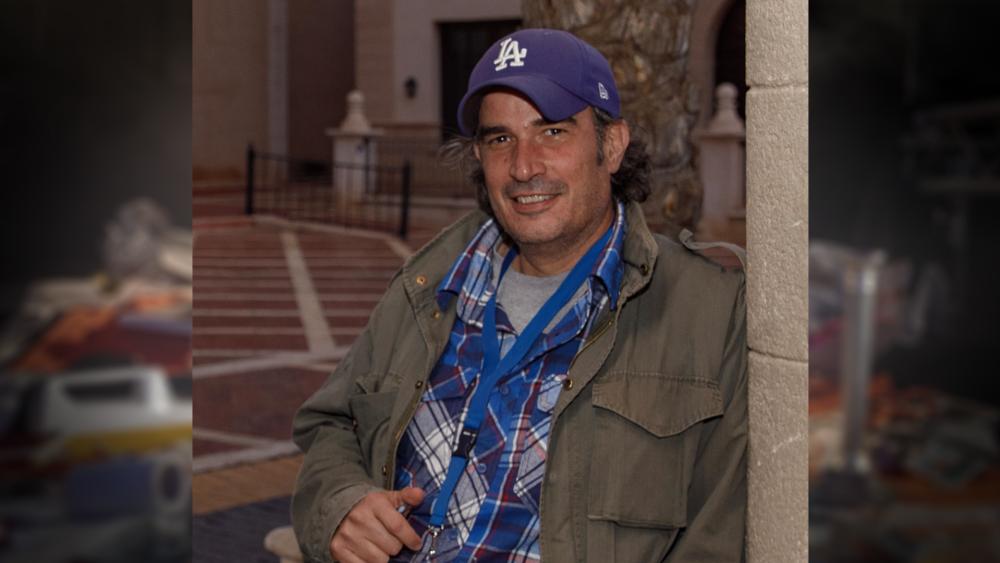
The stumble and rise of The Rocky Horror Picture Show
After less than a year in the States, the movie adaptation was in the works. But The Rocky Horror Picture Show wasn’t an instant hit like many would assume. The movie initially flopped because it was shown in regular cinemas that were accustomed to more family-friendly productions. It went over people’s heads, with some even offended by the sexuality. Within a week or two, the show was removed from screenings altogether.
Almost a year later, with The Rocky Horror Picture Show essentially shelved by 20th Century Fox, it was put onto midnight screening at more hip theatres – starting with The Waverley in New York. Over time, it gained a cult following with the same crowds of people coming to see it time and again.
Audiences began to participate with the film, dressing up, applauding and even throwing various items towards the screen. The phenomenon snowballed, and eventually they were performing songs themselves and even reenacting the entire film in front of the screen.
That’s what grabbed Zerr’s attention. 'The original idea was to do sort of a late making-of feature: Travel to the original shooting spots, interview a few people of the original cast and crew – something like that. But it grew and grew. The deeper we dug, the more interesting it became...'
'Fairly early in the production, after the first couple of interviews, it occurred to us that Rocky Horror is much more than just some weird, cultish film from the 70s. Starting with the original conception of the play, how it came to pass in a 60-seat theatre in London, failing at the box office and on Broadway, being picked up by a bunch of guys almost a year later, and becoming this huge phenomenon that captures the hearts and minds of people throughout three generations – that is an extraordinary story. How could I resist?'
Focusing on the fans
While many documentaries focus primarily on the making of a film or its stars, Sane Inside Insanity highlights a different protagonist – the fans. 'The role of the fans is vital,' explains Zerr. 'Without the fans, there would not be a Rocky Horror cult phenomenon. There wouldn't even be Rocky Horror screenings or stage shows anymore. The fans have carried it all the way and made it their own.'
'Without them, Rocky Horror would gather dust on the shelf, being known only by a bunch of nerdy cult movie fans at most. I am absolutely convinced that people like Sal Piro (founder and president of the fan club) and the people beside him are solely responsible for the success of Rocky Horror. No doubt about that.'
It’s not just the initial passion that surprised Zerr. He’s equally struck by the longevity of their support. 'What was also very surprising for us was the devotion and love from the fans,' he says. 'Speaking to people who are celebrating Rocky Horror for 25, 30, 40 years was mind-blowing. I mean, how much of a fan do you have to be to see a film literally thousands of times? Every weekend, for forty years? And still loving it?'
Why Rocky Horror’s themes still matter
A large part of the film’s success is down to its themes of celebration and liberation. However, it’s remarkable that a story born in the early 1970s still speaks to a modern audience. When asked about this, Zerr explains his view that the challenges faced by young people remain largely the same.
'I don’t think individual struggles have changed massively. The perception of the people has changed, and so has the general acceptance of LGBTQIA+, for example, but the struggles, especially of younger people, remain the same.'
'There’s still the pressure to conform to the general society, and if you don’t, you’d be pushed to the sidelines eventually, which nowadays happens even faster through social media than it did fifty years ago.'
'I think people still struggle with the same issues they’ve struggled with back in the 1970s and 1980s – shyness, not being generally accepted in the communities, mental problems, struggles with their body shapes or their sexuality, and so on. Rocky Horror provided and still provides a safe space, acceptance, encouragement and camaraderie for those people.'
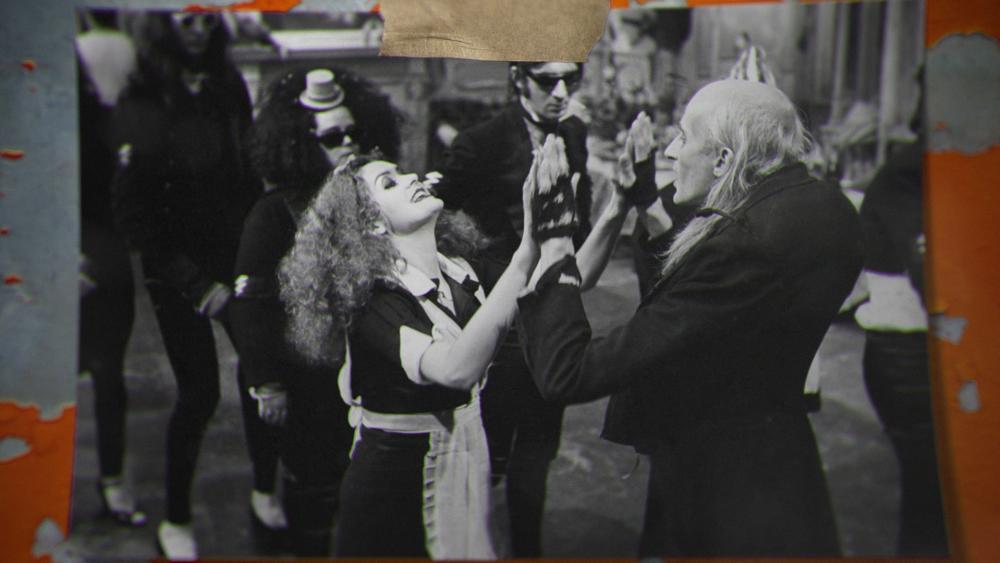
Has Rocky Horror become commercialised?
Despite its lasting popularity, some argue that Rocky Horror today feels more like a commercialised production. Critics say that it has lost some of the raw, rebellious spirit that defined performances in the 1970s and 80s. While Zerr accepts this, he sees it as more of a natural progression.
“'t has become a big, commercial entity, no doubt about that. Though I haven’t seen the original production prior to the relaunch in the early 1990s, I assume that the current productions have lost a lot of their edgy and gritty flair. But again, it’s a natural progression. Audiences nowadays expect a spectacle when they go out to see The Rocky Horror Show – and pay a lot of money for their ticket. And as long as the show still gives joy and fun to the people attending it, who’s to argue?'
'Rocky Horror has become a money-making machine for many people. If you take a look at the countless books, the merchandise, records, the documentaries, the 4k-release of the movie, the current US-tour, all coming out for the 50th anniversary, there’s no doubt people are cashing in on the phenomenon as much as they possibly can. And as long as there’s a demand for everything Rocky Horror, there’s a desire to capitalise on it.'
Objectivity, independence and production challenges
After its initial release, Sane Inside Insanity has been called a 'Love Letter to Rocky Horror' by many news outlets. But that’s not something Zerr intended.
'We never set out to glorify Rocky Horror, and we never set out to vilify it. Every story of success has a story of failure hidden inside it, and so does Rocky Horror, both on a level of public reception and on other, more personal levels. As a filmmaker, if you are not able to maintain an objective view, you are not creating a documentary; you’re creating a feature-length commercial. Journalistic independence is the key to good documentaries, which I sincerely hope we have achieved.'
Not only that, but Zerr emphasises that Sane Inside Insanity is a fully independent documentary, which is rare in today’s climate, where financial pressures and audience expectations often shape the way stories are told.
'You won’t find many projects of this kind nowadays; the risk of financial loss is too high, and the overall perception of documentaries has changed a lot. If a story is not told luridly, loudly and fast, people don’t seem to pay attention anymore. And ours isn’t.'
'Unlike many other features and documentaries out there, we do not have any relations to Rocky Horror; we are neither financially nor family bound. So eventually, we are not tied to the future success of either the film or the stage play.'
Naturally, this approach created more challenges for Zerr and his team. 'It’s a big technical and financial challenge to produce a documentary to this extent, filmed across three continents over a period of ten years, without financial backup from a studio or a network,' he explains.
'Also, as it’s in parts a historical film, obtaining all the necessary rights for archival material is an administrative nightmare. But once we had overcome these struggles, it became a very entertaining and interesting process, especially doing the interviews with so many amazing people, from the original cast and crew all along to the fans nowadays.'
Director’s takeaway: The heart of Rocky Horror
Ultimately, Zerr hopes the documentary captures both the history and the heart of Rocky Horror – its fans, its community and its enduring cultural impact. Whether they’re newcomers (like Zerr was) or longtime devotees, audiences should come away with a deeper understanding of why this story continues to resonate decades later.
'For the fans and members of the community, I hope that we have told some facets of the history of Rocky Horror they did not know before, and that they feel that we have portrayed them in the decent, honest and respectful way they deserve.'
'For people not so acquainted with the history of Rocky Horror and its fandom across the world, I hope that they see it in a different light,' he concludes. 'It’s not just this weird relic from the seventies. It’s a place where people can belong, a place of acceptance, joy and friendship. In general, Rocky Horror is a very good thing that happened to the world, and I hope we’ve highlighted that accordingly.'
Watch Sane Inside Insanity: The Phenomenon of Rocky Horror now by heading to the official website.
Want more stories on cultural phenomena like Rocky Horror? Sign up to the Sky HISTORY newsletter today! Every week, you’ll receive fascinating history stories, news, clips and more delivered straight to your inbox.
